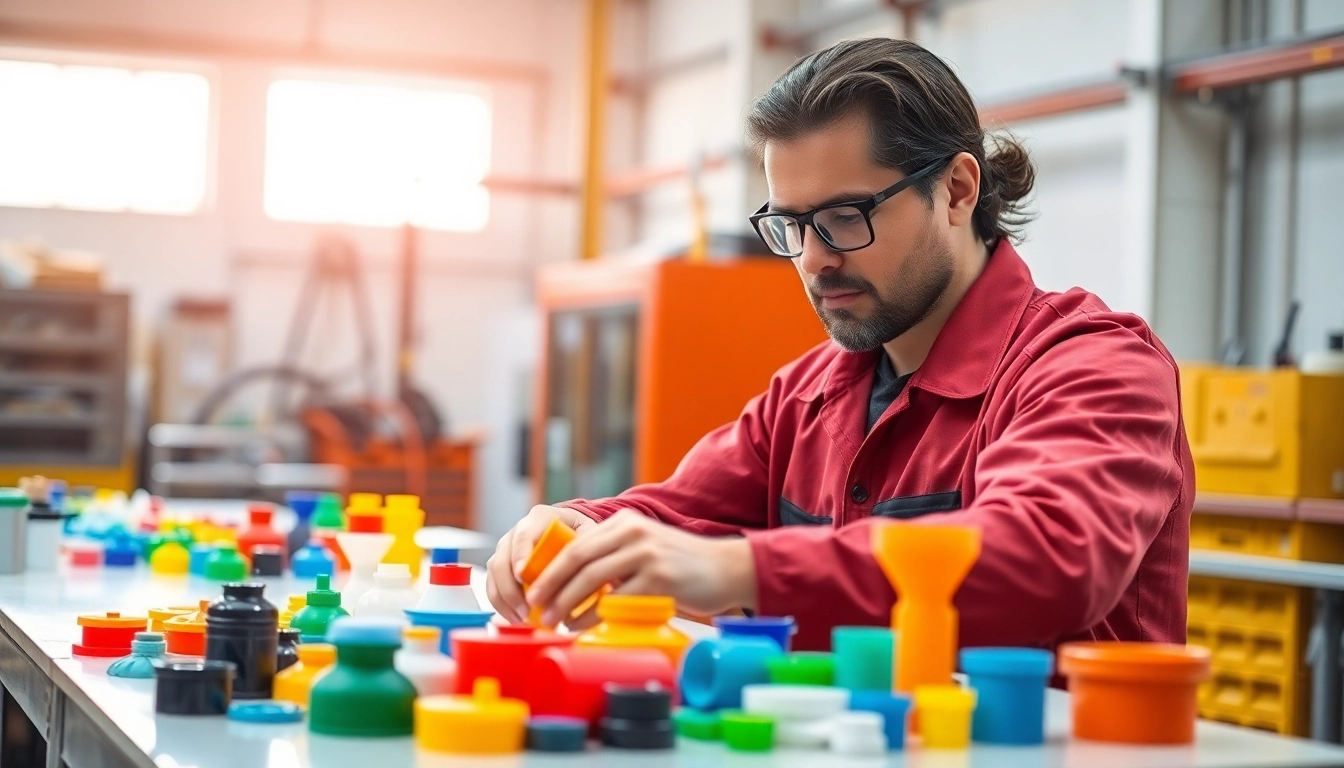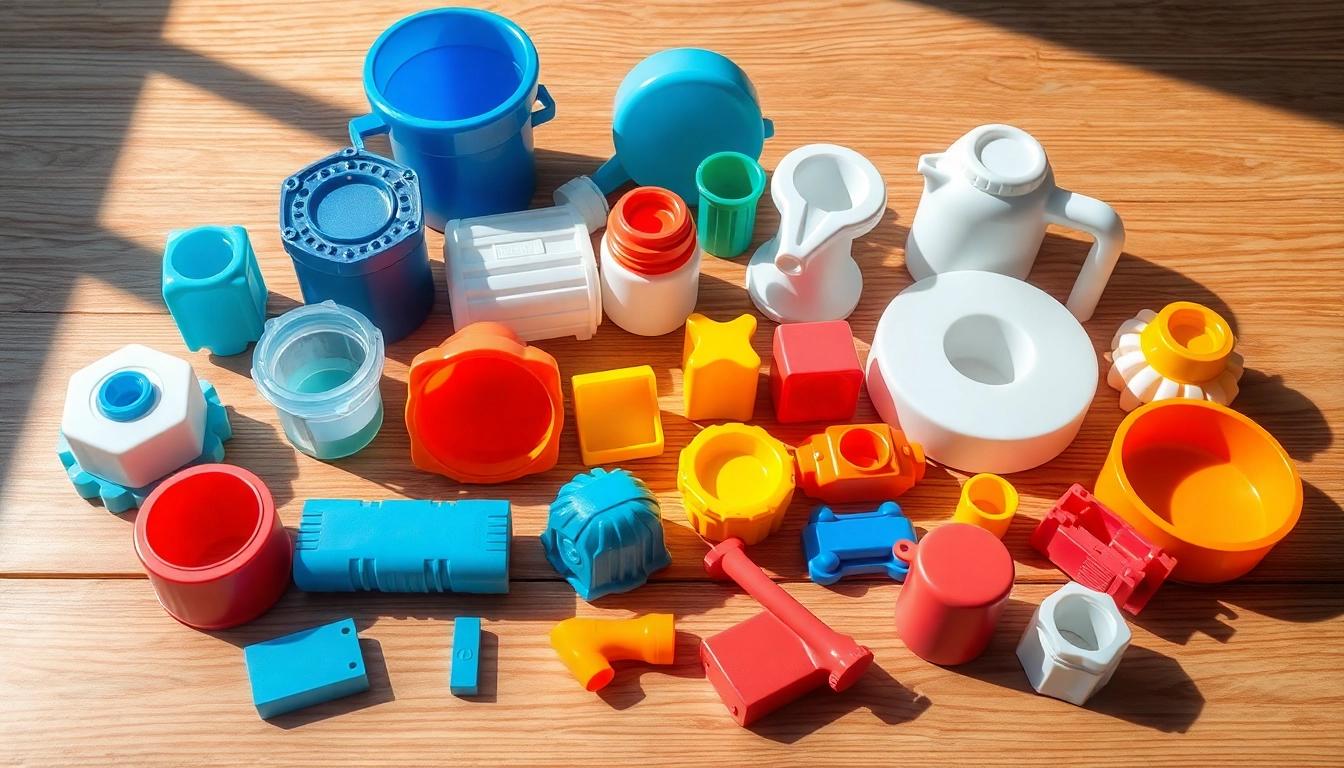Understanding Blow Moulding Process
Blow moulding is a specialized manufacturing process widely used to create hollow plastic parts, driven by the need for lightweight and versatile designs across various industries. This process offers a unique combination of efficiency and scalability, making it a popular choice for producing large quantities of identical parts. Whether it’s plastic bottles, automotive components, or intricate packaging designs, the relevance of blow moulded plastic parts cannot be overstated. Below, we dive deeper into the blow moulding process, its techniques, and applications that are reshaping the landscape of manufacturing.
What Are Blow Moulded Plastic Parts?
Blow moulded plastic parts are hollow components created through the blow moulding process involving the inflation of heated plastic into a pre-designed mould. The result is a lightweight, strong, and often seamless part ideal for various applications. These parts are fundamental in industries such as packaging, automotive, and consumer goods, where functionality meets durability. The versatility of materials used in blow moulding further enhances its applicability across different sectors.
The Steps of Blow Moulding
The blow moulding process typically consists of three main steps: extrusion, inflation, and cooling. Below is a breakdown of the process:
- Extrusion: A plastic polymer is melted and forced through an extruder to form a parison, a hollow tube of plastic.
- Inflation: The parison is clamped within a two-part mould, and air is blown into it, forcing the plastic to expand and take the shape of the mould.
- Cooling: The mould is cooled to solidify the part, after which the mould opens, and the finished blow moulded part is ejected.
This sequential process allows for precision manufacturing, enabling companies to produce intricate designs with consistent quality.
Common Applications of Blow Moulded Parts
Blow moulded parts find applications in numerous industries. Some common applications include:
- Packaging: Highly efficient in producing bottles, containers, and jars that require both strength and lightness.
- Automotive: Used for manufacturing fuel tanks, air ducts, and exterior components that must withstand harsh environments.
- Consumer Products: Common in everyday items such as toys, household goods, and personal care products.
Each application leverages the inherent advantages of blow moulded parts, such as reduced material weight and functional flexibility.
Types of Blow Moulding Techniques
There are several blow moulding techniques, each with its specific use cases and benefits. Here, we discuss three primary types:
Extrusion Blow Moulding Explained
Extrusion blow moulding, one of the most common methods, involves extruding molten plastic into a tubular shape known as a parison. The key characteristics of this technique include:
- Cost-Effective: Suitable for high-volume production with reduced machinery costs.
- Versatile: Allows for the creation of various part sizes and shapes with complex geometries.
- Material Efficiency: Minimizes waste due to precise control over the material flow.
This technique is ideal for manufacturing products like containers and bottles, where a seamless finish is often desired.
Injection Blow Moulding Overview
Injection blow moulding combines the benefits of injection moulding for the preform and blow moulding for final shaping. This method is beneficial for:
- High Precision: It produces intricate details and tight tolerances, essential for applications in medical and automotive parts.
- Quality Surface Finish: It offers an excellent surface finish, improving aesthetics for consumer products.
- Material Variety: This technique accommodates a broad range of thermoplastics.
Injection blow moulding is particularly suited for small, complex parts that require a high degree of accuracy.
Injection Stretch Blow Moulding Benefits
Injection stretch blow moulding is a hybrid process that begins with an injection-moulded preform, which is then stretched and blown into the final shape. This technique boasts numerous advantages:
- Enhanced Strength: The stretching process aligns the polymer molecules, resulting in stronger and more durable parts.
- Lightweight Design: It effectively reduces material usage while maintaining product strength.
- Improved Barrier Properties: This method is particularly effective for producing bottles that require excellent barrier properties against oxygen and CO2, making it popular in the beverage industry.
Overall, injection stretch blow moulding is an ideal choice for high-performance packaging solutions.
Materials Used in Blow Moulding
The choice of materials is pivotal in blow moulding, influencing not only the quality of the final product but also its performance in various applications. Below, we explore some common materials and their characteristics.
Popular Plastics for Blow Moulding
Several types of plastics are commonly used in blow moulding, each offering distinct advantages:
- Polyethylene (PE): Widely used due to its flexibility and durability, PE is suitable for various packaging applications.
- Polypropylene (PP): Known for its high melting point and chemical resistance, making it ideal for automotive and industrial parts.
- Polyethylene Terephthalate (PET): Particularly popular in beverage bottles due to its excellent barrier properties and recyclability.
These materials’ specific properties allow manufacturers to choose the right plastic based on the application requirements.
Choosing the Right Material for Your Needs
Selecting the appropriate material for blow moulding is critical to achieving the desired properties and functionality of the final product. Here are a few considerations:
- End-Use Requirements: Understand the functional requirements the end product must fulfil.
- Environmental Conditions: Consider the conditions the part will be exposed to, such as temperature fluctuations, and chemical contact.
- Regulatory Compliance: Ensure materials meet any industry-specific regulations for safety and health.
These factors are integral to making informed material choices that reflect both utility and compliance.
Environmental Impacts of Plastic Materials
With growing concerns surrounding plastic pollution and environmental degradation, understanding the environmental impacts of materials used in blow moulding is essential. Key considerations include:
- Recyclability: Many blow moulded plastics, such as PET, are highly recyclable, reducing their overall environmental footprint.
- Lifecycle Assessment: Assessing the entire lifecycle of plastic materials can help manufacturers choose options with the least environmental impact.
- Sustainable Practices: Incorporating recycled materials into production processes can significantly reduce virgin plastic use and lower emissions.
Manufacturers are increasingly encouraged to adopt sustainable practices to mitigate ecological impacts while ensuring efficiency and effectiveness.
Quality Control in Blow Moulded Production
To maintain the integrity of blow moulded plastic parts, implementing quality control measures throughout the production process is vital. Understanding the standards and practices ensures that products meet industry benchmarks.
Standards and Best Practices
Numerous guidelines can help maintain product quality in blow moulding:
- ISO Certifications: Compliance with ISO 9001 standards helps ensure consistent quality management.
- Process Monitoring: Employ real-time monitoring technologies to track parameters such as temperature and pressure, ensuring optimal production conditions.
- Staff Training: Regular training and development programs for staff involved in production can improve understanding and adherence to quality practices.
Adhering to these standards optimizes quality assurance throughout the production cycle.
Testing and Inspection Methods
To guarantee high-quality production, various testing and inspection methods are essential:
- Dimensional Inspection: Verifying parts against specifications to ensure precision organization.
- Pressure Testing: Assessing the ability of parts to withstand operational pressure effectively.
- Visual Inspection: Inspecting the surface quality for defects or irregularities.
Utilizing these testing techniques enhances reliability and performance in blow moulded parts.
Common Quality Issues and Solutions
Despite rigorous quality control, certain issues can arise during blow moulding. Common problems may include:
- Wall Thickness Variability: This can lead to product weakness. Implementing advanced control systems can help ensure consistent material flow.
- Defects in Surface Finish: Solutions include optimizing cooling processes and mould maintenance.
- Inaccurate Dimensions: Periodic calibration of machinery and careful monitoring of setup parameters can help address this issue.
Recognizing and addressing these common quality issues ensures that blow moulded parts reliably meet specifications.
Future Trends in Blow Moulded Plastic Parts
As technology advances, the blow moulding industry continues to evolve, presenting numerous trends that impact production and design. Below, we explore some of the future trends that are shaping blow moulded plastic parts.
Innovations in Blow Moulding Technology
Technological innovations are paving the way for enhanced efficiency and product quality:
- Automation: The integration of robotics in the production process enhances precision while reducing labor costs.
- Smart Manufacturing: Implementing IoT devices allows for real-time monitoring and data collection, facilitating predictive maintenance.
- Advanced Materials: Research into new materials can lead to lighter, stronger, and more sustainable blow moulded parts.
These innovations are driving improved productivity, product integrity, and sustainability across the blow moulding industry.
Sustainability Practices in Manufacturing
With increasing pressure to adopt sustainable production methods, the blow moulding industry is responding by integrating various practices.
- Use of Recycled Materials: More manufacturers are incorporating recycled plastics to reduce dependency on virgin materials.
- Energy Efficiency: Developing energy-efficient machinery impacts cost savings and reduces carbon footprints.
- Sustainable Packaging Design: Projects focus on reducing plastic waste by innovating designs that use fewer materials while maintaining strength.
Such sustainability efforts are crucial for future-proofing operations in a rapidly changing regulatory environment.
Market Demand and Growth Opportunities
The market for blow moulded plastic parts is expected to experience sustained growth, driven by various factors, including:
- Emerging Markets: Growing economies are increasing demand for packaging and consumer products, presenting manufacturers with expansion opportunities.
- Technological Advances: Innovations are opening new applications across industries, stimulating market growth.
- Increased Environmental Awareness: Demand for sustainable production methods and materials is reshaping the market landscape.
These growth opportunities underscore the importance of adaptability and innovation for manufacturers within the blow moulding sector.

